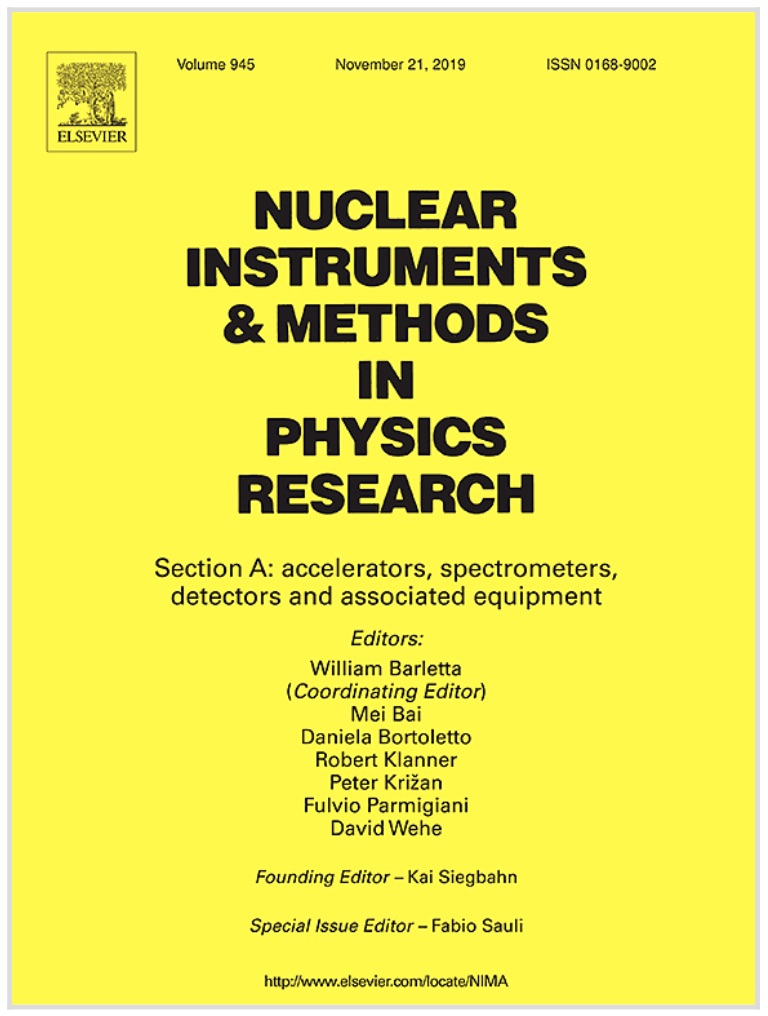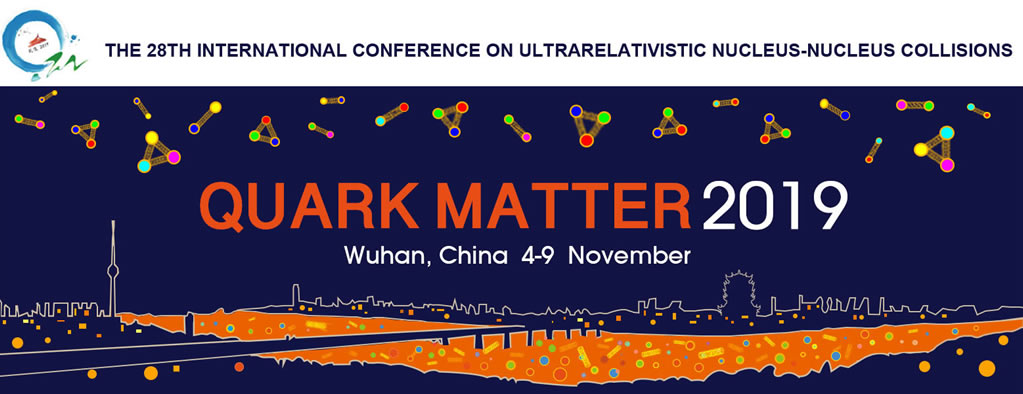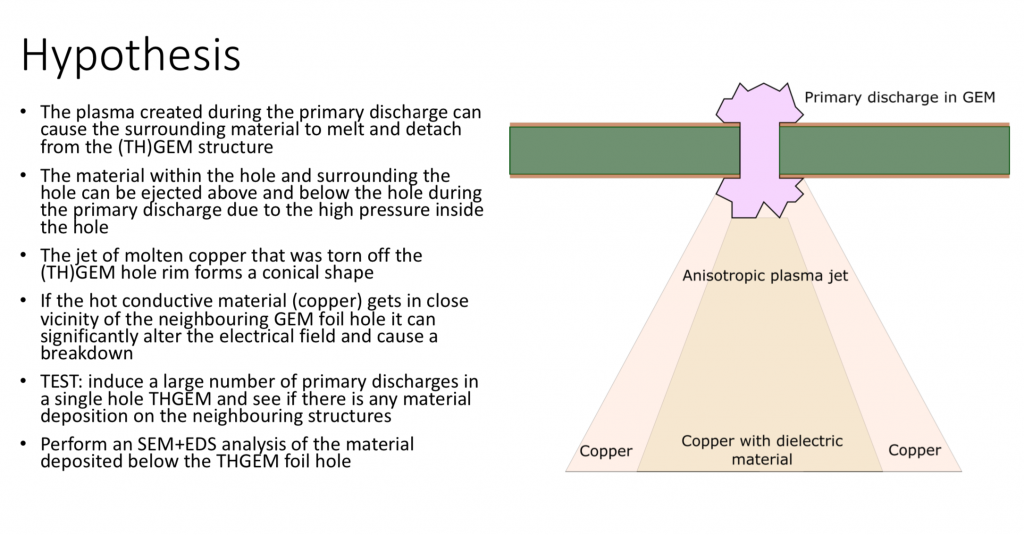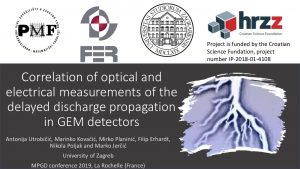3.10.2018.
Grupa je sudjelovala na znanstvenom sastanku Hrvatskog Fizikalnog Društva s posterskim izlaganjem naslova “Primjena tehnika dubokog učenja u fizici teških iona”.
Kako je primarni cilj projekta studiranje dugodosežne “ridge” strukture u dvočestičnim kutnim korelacijama, glavna prepreka koja otežava to istraživanje je visoka pozadina koja potiče od snopova čestica u kojima su čestice jako korelirane, no nisu dio ridge korelacije. U svrhu razumijevanja i eventualnog uklanjanja te pozadine, usredotočili smo se na istraživanje naravi i porijeklo samih snopova. Originalno se to uklanjanje namjeravalo vršiti korištenjem varijable transverzalnog sfericiteta, ali autokorelacije između transversalnog sfericiteta (varijabla koja ovisi o obliku događaja) i dvočestične kutne korelacijske funkcije (koja također ima ovisnost o obliku događaja) donekle onemogućuju nezavisna mjerenja. Stoga smo paralelno sa sfericitetom krenuli s implementacijom nove obećavajuće metode za detekciju i izoliranje tih snopova koristeći neuralne mreže i strojno učenje.
Ovdje se može vidjeti website sastanka, a klikom na sliku lijevo otvara se link na poster.
5.-10.5.2019.
Na konferenciji “MicroPattern Gaseous Detectors Conference 2019 (La Rochelle, Francuska) održali smo predavanje “Correlation of optical and electrical measurements of the delayed discharge propagation in GEM detector” u suradnji s A. Utrobičić.
Ovdje se može vidjeti website sastanka, a klikom na sliku lijevo otvara se prezentacija.

19.07.2019.
Grupi je u časopisu Nuclear Instruments and Methods A prihvaćen i objavljen članak “Studies of the delayed discharge propagation in the Gas Electron Multiplier (GEM)”.
Preprint članka dostupan je na ArXiV repozitoriju, dok se sam članak može naći na stranicama časopisa. U radu je opisan način na koji se izboji propagiraju u GEM detektorima, a izrađen je na laboratorijskom postavu dobivenim HRZZ projektom.
This paper presents an investigation of the discharge propagation (DP) to the readout electrode that occurs with a microsecond time delay after a primary discharge that develops inside a GEM foil hole. A single hole THGEM (THick GEM) foil that enables a controlled discharge position and the induction of primary discharge with an over-voltage in the THGEM foil has been used in the initial DP measurements. In order to justify the use of a custom-made THGEM foil, additional measurements were made with a standard GEM foil. Correlated optical (with an ordinary SLR and a high-speed camera) and electrical measurements of the delayed DP were made for Ne-CO2-N2 (90-10-5) mixture and with different powering configurations. Measurements show that the delayed DP happens without a drift field, with an inverted induction field, inverted THGEM voltages or an inverted drift field. After the primary discharge, there is a charge transfer in the induction region at an induction field value below that of the onset field for DP. In the time between the primary discharge and the delayed DP, three different current regimes are observed, which suggests multiple charge transfer mechanisms in the induction region. High-speed camera recordings provide valuable insight into the time evolution of the primary and the delayed DP, especially when correlated with electrical measurements.

15.08.2019.
Grupi je na konferenciji Quark Matter 2019. (Wuhan, China) prihvaćeno postersko izlaganje naslova “Discharge propagation in GEM detectors”.
Micropattern gaseous detectors (MPGDs) are a group of modern gaseous ionizing detectors consisting of microelectrode structures developed to overcome many of the difficulties of traditional gaseous detectors such as multiwire proportional chambers. The gas electron multiplier (GEM) is one of the most prolific MPGDs currently in use and slated to be used for many future detectors or current detector upgrades. Recent research conducted on discharges in GEM detectors will be presented. Delayed propagating discharges to the readout plane are a potential threat to the stable operation of GEM detectors and can cause permanent damage to the detector. An experimental setup enabling simultaneous electrical and optical measurements is used to provide novel insights regarding the physical mechanism of the delayed discharge, including the microsecond time delay between the primary and secondary discharges. Based on these measurements, indicators of the onset of the delayed propagating discharge are identified by means of the charge transfer to the readout electrode and potential methods to prevent or mitigate the delayed discharge propagation are proposed.

22.-26.6.2020.
Na konferenciji “RD51 Collaboration meeting and lectures (CERN, online) održali smo predavanje “Induction of GEM to GEM discharges by using a single hole THGEM”. Predavanje se može vidjeti ovdje.

7.9.2020.
Grupi je u časopisu Entropy prihvaćen i objavljen članak “Exploring the Possibility of a Recovery of Physics Process Properties from a Neural Network Model “. Članak se može naći besplatno u otvorenom pristupu na stranicama časopisa.
The application of machine learning methods to particle physics often does not provide enough understanding of the underlying physics. An interpretable model which provides a way to improve our knowledge of the mechanism governing a physical system directly from the data can be very useful. In this paper, we introduce a simple artificial physical generator based on the Quantum chromodynamical (QCD) fragmentation process. The data simulated from the generator are then passed to a neural network model which we base only on the partial knowledge of the generator. We aimed to see if the interpretation of the generated data can provide the probability distributions of basic processes of such a physical system. This way, some of the information we omitted from the network model on purpose is recovered. We believe this approach can be beneficial in the analysis of real QCD processes.

11.2.2021.
Grupi je u časopisu Nuclear Instruments and Methods A prihvaćen i objavljen članak “Electrical discharge propagation between GEM foils”.
Članak može naći na stranicama časopisa. U radu je opisan mehanizam nastanka proboja u GEM detektorima, a izrađen je na laboratorijskom postavu dobivenim HRZZ projektom.
This paper presents the studies of fast sequential discharge formations in neighboring Gas Electron Multiplier foils (so called fast discharge propagations). We report on the characteristics of the time delay between the discharges, which has been shown to be of the order of tens of nanoseconds. This time delay decreases both with increasing voltage on the foil where the secondary discharge occurs as well as with decreasing distance between the neighboring foils. Optical measurements of the discharges in two- and three-stage detector setups show that the propagating discharge does not occur directly below the primary discharge, but is displaced from the shortest line between neighboring foils. This observation, together with Scanning Electron Microscope and Energy Dispersive Spectroscopy analyses of the material deposited below the position of the primary discharge provide valuable information on the time evolution of the fast discharge propagation through the detector and its formation mechanism. In the light of these findings, we propose and discuss a new hypothesis for the occurrence of the secondary discharges.


